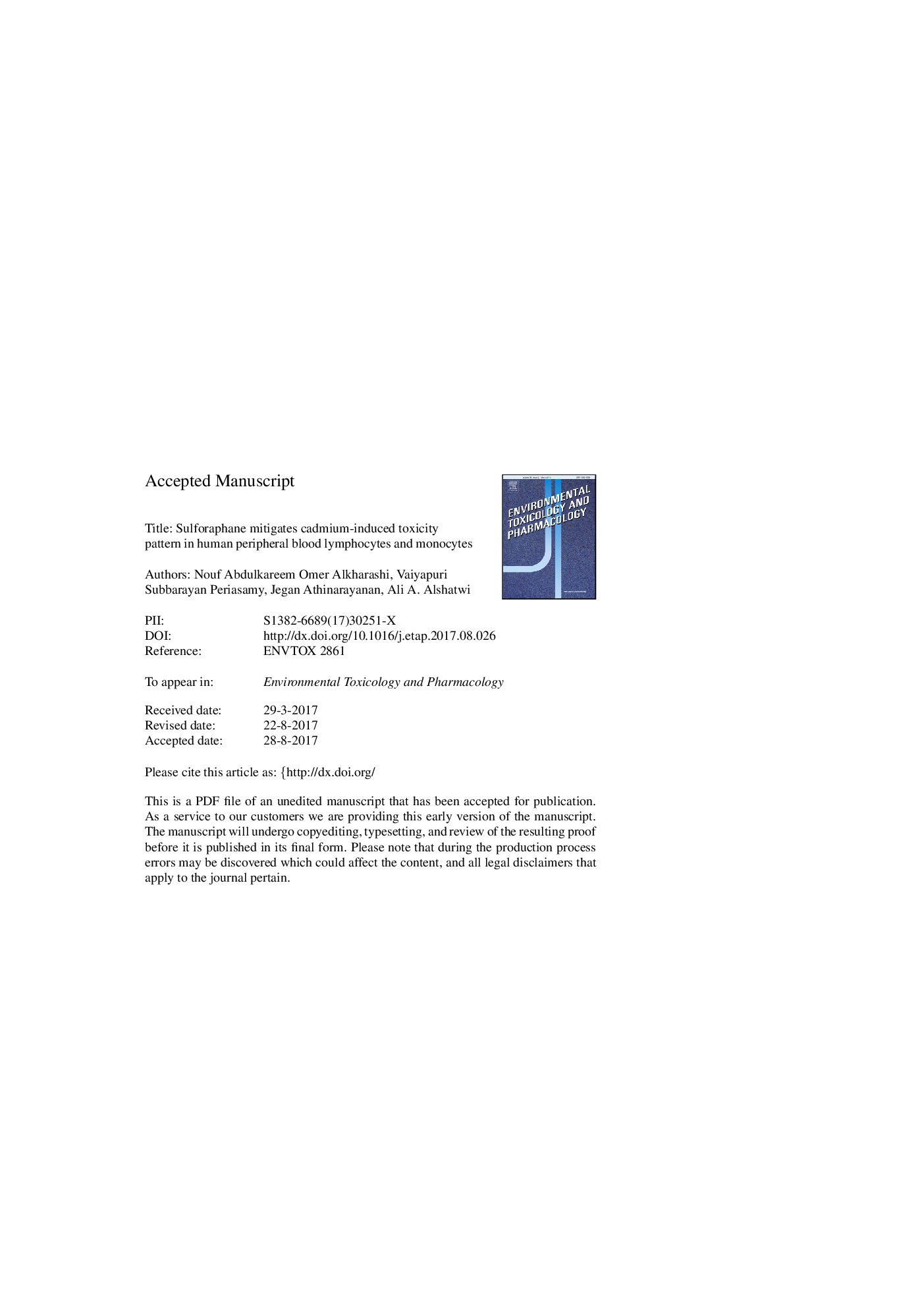| Article ID | Journal | Published Year | Pages | File Type |
|---|---|---|---|---|
| 5559789 | Environmental Toxicology and Pharmacology | 2017 | 12 Pages |
Abstract
Cadmium (Cd) is a highly toxic and widely distributed heavy metal that induces various diseases in humans through environmental exposure. Therefore, alleviation of Cd-induced toxicity in living organisms is necessary. In this study, we investigated the protective role of sulforaphane on Cd-induced toxicity in human peripheral blood lymphocytes and monocytes. Sulforaphane did not show any major reduction in the viability of lymphocytes and monocytes. However, Cd treatment at a concentration of 50 μM induced around 69% cell death. Treatment of IC10-Cd and 100 μM sulforaphane combination for 24 and 48 h increased viability by 2 and 9% in cells subjected to Cd toxicity, respectively. In addition, IC25 of Cd and 100 μM sulforaphane combination recovered 17-20% of cell viability. Cd induced apoptotic and necrotic cell death. Sulforaphane treatment reduced Cd-induced cell death in lymphocytes and monocytes. Our results clearly indicate that when the cells were treated with Cd + sulforaphane combination, sulforaphane decreased the Cd-induced cytotoxic effect in lymphocytes and monocytes. In addition, sulforaphane concentration plays a major role in the alleviation of Cd-induced toxicity.
Related Topics
Life Sciences
Environmental Science
Health, Toxicology and Mutagenesis
Authors
Nouf Abdulkareem Omer Alkharashi, Vaiyapuri Subbarayan Periasamy, Jegan Athinarayanan, Ali A. Alshatwi,
